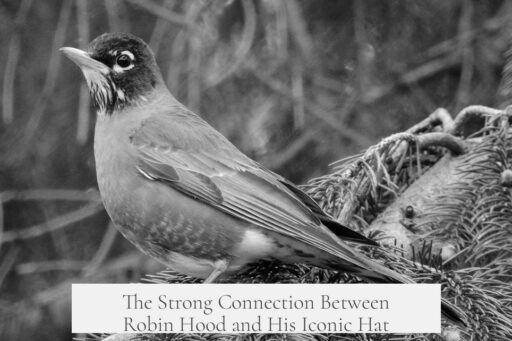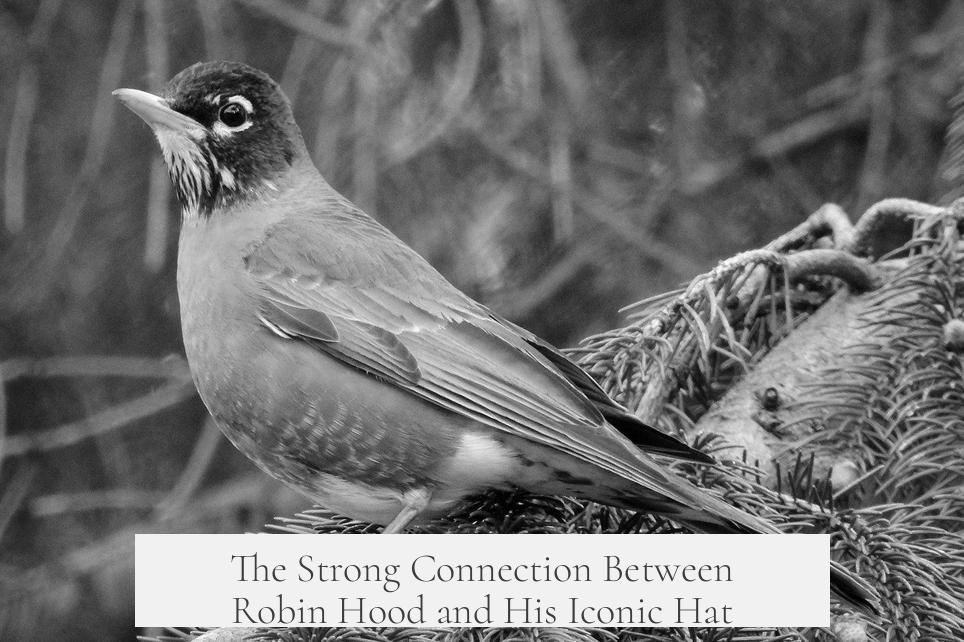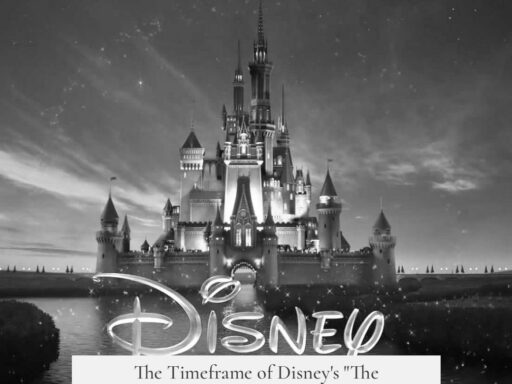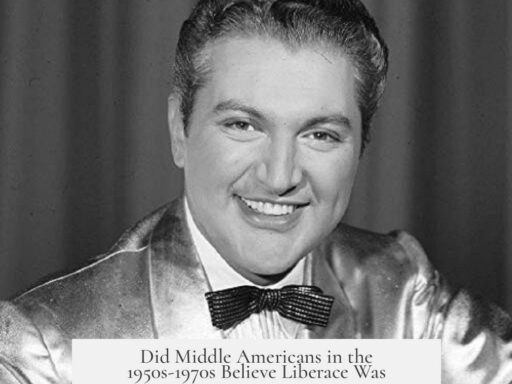Robin Hood’s strong association with a particular hat, often identified as the pointed “bycocket,” results from a gradual evolution of his image spanning several centuries rather than from original medieval texts or folklore. Early references only mention that he wore “a hat and hood,” highlighting hats as symbols of higher social status in 15th-century England. The now-iconic pointed hat became firmly linked to Robin Hood through a combination of practical, economical, and illustrative reasons that emerged mostly from the 16th century onward.
The earliest textual evidence, dating to the early 1400s, simply describes Robin Hood wearing “hat and hood.” In medieval England, while hoods were common among all classes, hats often signified wealth or higher rank. This subtle detail indicated Robin Hood’s elevated social position or perhaps his gentlemanly roots, a contrast to the ordinary outlaw image.
The first visual representation connecting Robin Hood to a hat closely resembling the modern image comes from a 16th-century woodcut printed in Antwerp for A Lytell Geste of Robyn Hude. Interestingly, this image was not originally designed for Robin Hood. Instead, the printer reused an illustration of the Knight’s Yeoman from Chaucer’s Canterbury Tales. This reuse was likely a cost-saving measure, common in early printing, which inadvertently froze that yeoman’s style of hat as Robin Hood’s.
The Knight’s Yeoman wore a cap similar to the bycocket, a hat with a characteristic pointed, sometimes feathered shape. The bycocket was popular in the 14th and 15th centuries, worn by both men and women, but its direct association with Robin Hood did not appear in the original medieval tales or ballads. The connection seems to have blossomed from this recycled woodcut image combined with the yeoman’s known attire from Chaucer’s descriptions.
- The bycocket’s distinctive pointed shape was often worn with the point turned backwards during outdoor activities.
- Historical evidence from the Luttrell Psalter (c. 1320-1340) shows peasants and even animals depicted wearing the bycocket backwards.
- This backward wearing was practical, preventing the hat from falling off during hunting or labor.
This practical adaptation may explain why some early depictions of Robin Hood’s hat differ from later, more stylized versions. The backward bycocket became one visual hallmark tied to his image, blending functionality with style.
Through the centuries, the image of Robin Hood’s hat evolved. Early printed texts and illustrations from the 16th to 18th centuries often showed him with generic feathered hats or simple caps, not yet the sharply pointed bycocket. The mid-19th century brought important changes. John Matthew Gulch’s 1850 edition of Robin Hood included illustrations by F.W. Fairholt that hinted at a more medieval feathered cap, foreshadowing the iconic style.
Howard Pyle, with his 1883 The Merry Adventures of Robin Hood, created some of the most influential and classic images of Robin Hood and his band. His illustrations popularized varied hat styles and engaged audiences visually, paving the way for later artists to refine the hat’s design.
It was not until 1912 that the bycocket became definitively established as Robin Hood’s hat. American illustrator Louis Rhead, in his book Bold Robin Hood and his outlaw band, depicted Robin wearing the pointed bycocket with a feather, setting the modern standard. That same year, film portrayals began using similar hats, signifying the solidification of this style in popular culture.
The bycocket hat’s lasting image was cemented by the 1938 film The Adventures of Robin Hood, starring Errol Flynn. The film’s costume designers featured pointed felt hats closely resembling the bycocket, complete with feathers. Disney’s animated Robin Hood further entrenched this style in the popular imagination, continuing its legacy into the 20th and 21st centuries.
| Century | Key Development | Significance |
|---|---|---|
| 15th | Earliest texts mention “hat and hood” | Hat symbolizes higher social status |
| Early 16th | Woodcut print reuses Knight’s Yeoman image | Visual linking of Robin Hood with bycocket-like hat |
| Mid-19th | Illustrations by Fairholt and Howard Pyle | Medieval-feathered caps suggested, popularized imagery |
| 1912 | Louis Rhead’s illustrations reveal definitive bycocket | Bycocket becomes recognized Robin Hood hat |
| 1938 | Errol Flynn’s film & Disney’s animation | Hat style cemented in popular culture |
In short, Robin Hood’s signature hat is the result of historical costume elements, printing economy, practical hunting attire, artistic interpretation, and cinematic influence. The pointed “bycocket” hat is less a medieval fact and more a product of evolving cultural imagery shaped by centuries of storytelling and visual media.
- Early texts only mention Robin Hood wearing a hat and hood, not a specific style.
- His hat’s image originated from reused 16th-century prints of the Knight’s Yeoman.
- The bycocket hat was practical and common in medieval England but not originally linked to Robin Hood in writing.
- Wearing the hat backwards was practical for hunting and widely depicted in medieval art.
- Artistic illustrations in the 19th century refined the depiction of Robin Hood’s hat toward the medieval-feathered and pointed style.
- Louis Rhead’s 1912 illustrations and the 1938 Errol Flynn film popularized the iconic pointed bycocket hat we recognize today.
Why Is Robin Hood So Heavily Associated with That Particular Hat?
![]()
Robin Hood’s iconic hat, often a pointed green cap with a feather, is no accidental accessory but a symbol steeped in history, thrift, and a dash of practicality. While it’s easy to picture the legendary outlaw sashaying through Sherwood Forest with his feathered bycocket hat firmly in place, the origins of this image tell quite a fascinating tale.
Let’s unwrap why Robin Hood and that particular hat go together like Merry Men and archery—though the truth might surprise you.
A Medieval Status Symbol: The Earliest Mentions
![]()
The very first surviving Robin Hood story, dating back to the early 15th century, references him wearing “in hat and hood” — a phrase loaded with meaning at that time. You see, in medieval England, hoods were common neck-to-head coverings worn by everyone, peasants and nobles alike. But hats carried a different weight. They were markers of social standing, often signaling someone with status or wealth.
So, Robin’s “hat and hood” was a subtle clue to contemporaries: this wasn’t just any forest outlaw; he was possibly of higher social stature or disguising it cleverly. It’s like medieval fashion’s version of a secret handshake.
The Iconic Hat Image’s Budget Origins
![]()
Fast forward a century, and Robin Hood’s first pictorial appearance isn’t the stuff of bespoke costume design. Instead, it’s a savvy case of medieval thrifty printing. The earliest known image of Robin Hood’s hat appears in A Lytell Geste of Robyn Hude, printed around the early 1500s in Antwerp by Jan van Doesbroch.
Here’s the kicker: the illustration wasn’t even made for Robin Hood. It was a recycled image of the Knight’s Yeoman from Geoffrey Chaucer’s Canterbury Tales. Imagine if your favorite superhero’s latest comic was drawn by just tweaking last week’s fishing catalog art—same energy.
This clever re-use saved on the cost of designing new woodcuts. It also cemented the visual link between Robin Hood and a particular style of hat—a pointed one resembling what we now call the bycocket.
The Knight’s Yeoman: Robin Hood’s Gentle Ancestry
![]()
Why the Knight’s Yeoman? Chaucer’s yeoman was described as a skilled and rugged individual, somewhat like Robin Hood himself. Visually, their common dress provided a strong basis for associating Robin with this style of hat.
If you imagine the yeoman’s hat as a rough blueprint, Robin’s distinct look grew from this medieval style of headwear, gradually transforming across the years.
The Bycocket Hat: The Right Shape at the Right Time
![]()
Now, the bycocket hat—a pointed, often feathered cap popular in the 14th and 15th centuries—was not explicitly mentioned in early Robin Hood stories. But thanks to that early 16th-century woodcut, this hat style became visually linked to Robin.
John Marshall’s research highlights that Robin’s “bycocket” image likely stems from these reused prints. Interestingly, this hat was common to men and women of the time, which explains why Robin’s hat feels both heroic and somewhat down-to-earth.
Wearing the Hat Backwards: A Practical Touch
One detail you might notice in some early portrayals is that Robin’s hat is worn backwards. Not a fashion faux pas, but a clever, functional choice. Wearing the bycocket backwards helped prevent it from flying off while hunting or engaging in woodland escapades—a necessity for an active forest outlaw.
Historical manuscripts like the Luttrell Psalter (circa 1320-1340) show peasants, monkeys, and other characters sporting the bycocket like this. So, Robin Hood’s backward hat is less “style statement” and more “survival hack.”
Evolution Through the Centuries: From Feathered Caps to Bycocket
Robin Hood’s hat wasn’t always this sharp-pointed, feather-toting icon. Early printed versions from the 1500s and the 18th century often show him wearing simple feathered or fur caps instead of the bycocket style most people know.
It wasn’t until the mid-1800s, with illustrators like F.W. Fairholt and later Howard Pyle in his 1883 The Merry Adventures of Robin Hood, that the hat increasingly took on a medieval flair, incorporating feathers and a distinct shape.
Pyle’s illustrations were particularly influential. By putting Robin and his Merry Men in varied headgear with a medieval touch, Pyle enhanced the character’s mythic allure. Yet it was still an evolving image.
The Definitive Bycocket Hat: Louis Rhead’s 1912 Edition
The hat we immediately recognize as Robin Hood’s truly crystalized with American illustrator Louis Rhead’s 1912 book Bold Robin Hood and his outlaw band. Rhead’s drawings gave Robin a clear, pointed bycocket hat complete with its iconic tip.
Not long after, cinema embraced this look. The 1912 Robin Hood silent film showed characters wearing large bycocket hats, and while they were oversized (entirely on-brand for early cinema), the style stuck.
20th Century Pop Culture Cementing the Image
The bycocket hat was fully entrenched in the global imagination thanks to Errol Flynn’s dashing portrayal in the 1938 classic The Adventures of Robin Hood. Flynn’s emerald-clad Robin, complete with jaunty feathered cap, embodied the ultimate forest hero look.
Disney’s animated Robin Hood later solidified this image for new generations, turning the hat into a universally recognized symbol. Suddenly, the bycocket wasn’t just a hat; it was Robin Hood.
So, Why That Particular Hat?
To unravel why Robin Hood is so heavily linked with that pointed hat, here’s a quick recap:
- Early texts mention a hat, signaling social status, but not the specific style.
- The earliest iconic image was a reused illustration from Chaucer’s Knight’s Yeoman, saving printing costs and borrowing their distinctive hat.
- Practical hunting needs influenced wearing the bycocket hat backwards, helping keep it on in the forest.
- The modern pointed, feathered bycocket style became popularized mainly from the 19th century onward, with Howard Pyle and Louis Rhead playing crucial roles.
- Film and animation of the 20th century made that hat the definitive Robin Hood headwear for popular culture.
What Does This Say About History and Myth?
Robin Hood’s hat is a great example of how historical practicality, artistic economy, and cultural storytelling combine to create a powerful visual symbol. This hat isn’t simply a medieval relic—it’s a living emblem shaped by centuries of storytelling, reimagination, and yes, even budget printing decisions.
Would Robin Hood himself recognize the image of himself today? Hard to say. But one thing’s certain: that hat captures the spirit of the outlaw—practical, clever, a little rebellious, and undeniably iconic.
Practical Takeaway: What Can Modern Storytellers Learn?
The evolution of Robin Hood’s hat teaches us the power of visuals and symbols. A reused illustration, a hunting hack of wearing a hat backwards, and centuries of cultural layering show that lasting icons sometimes come from unexpected origins.
For writers, filmmakers, or anyone building a legend, remember: practicality and thrift can inspire brilliance. And sometimes, just sometimes, a hat is more than a hat—it’s a statement that lasts ages.
Bonus: If You Want to Spot the Bycocket Hat in History…
Look at medieval manuscripts like the Luttrell Psalter, then peek at 16th-century woodcuts for the Knight’s Yeoman, and finally hop into early 20th-century Robin Hood books or that swashbuckling 1938 movie. You’ll see the hat’s journey from a practical garment to a cultural icon.
In a way, the hat is a metaphor for Robin Hood himself—evolving, resourceful, and unforgettable.



